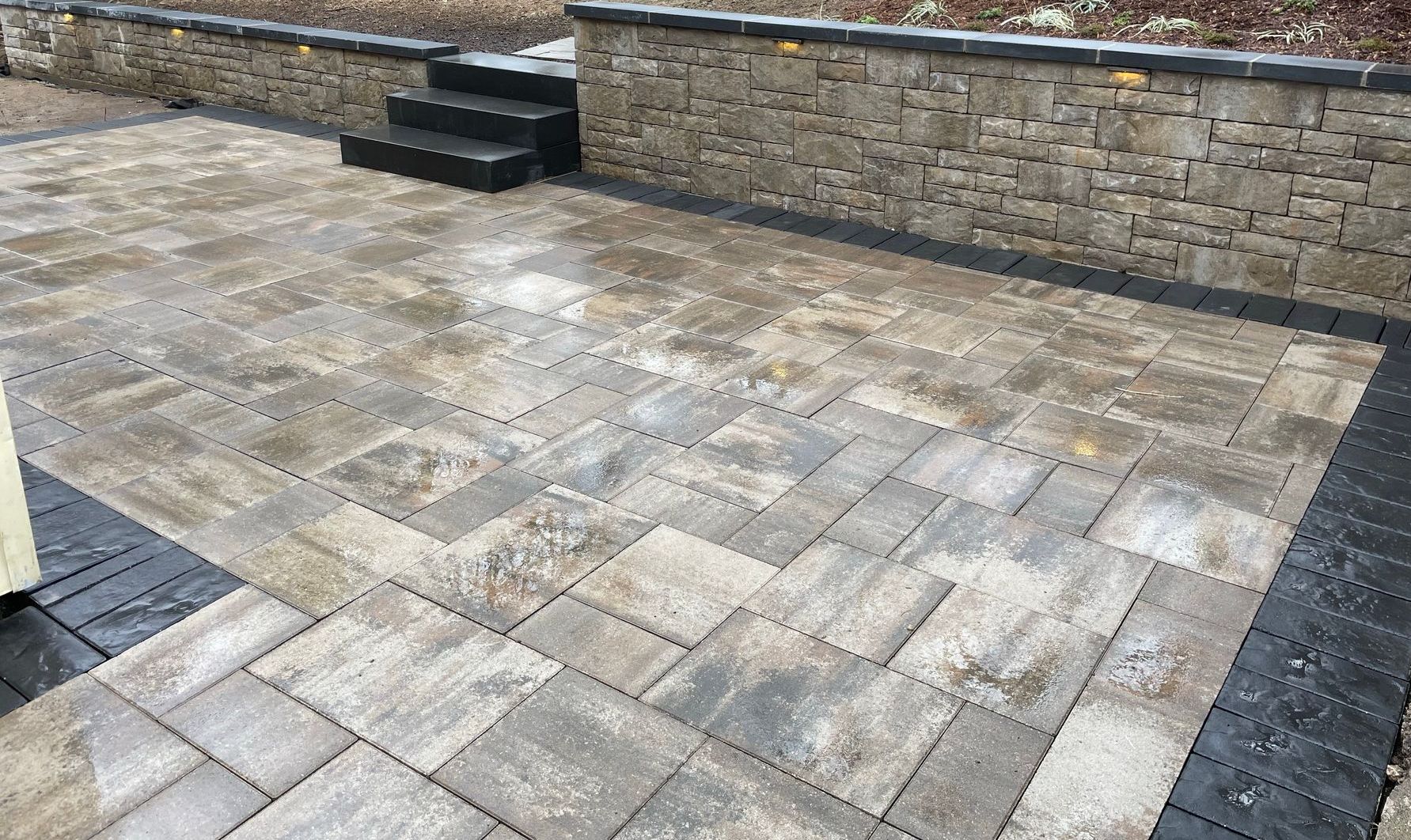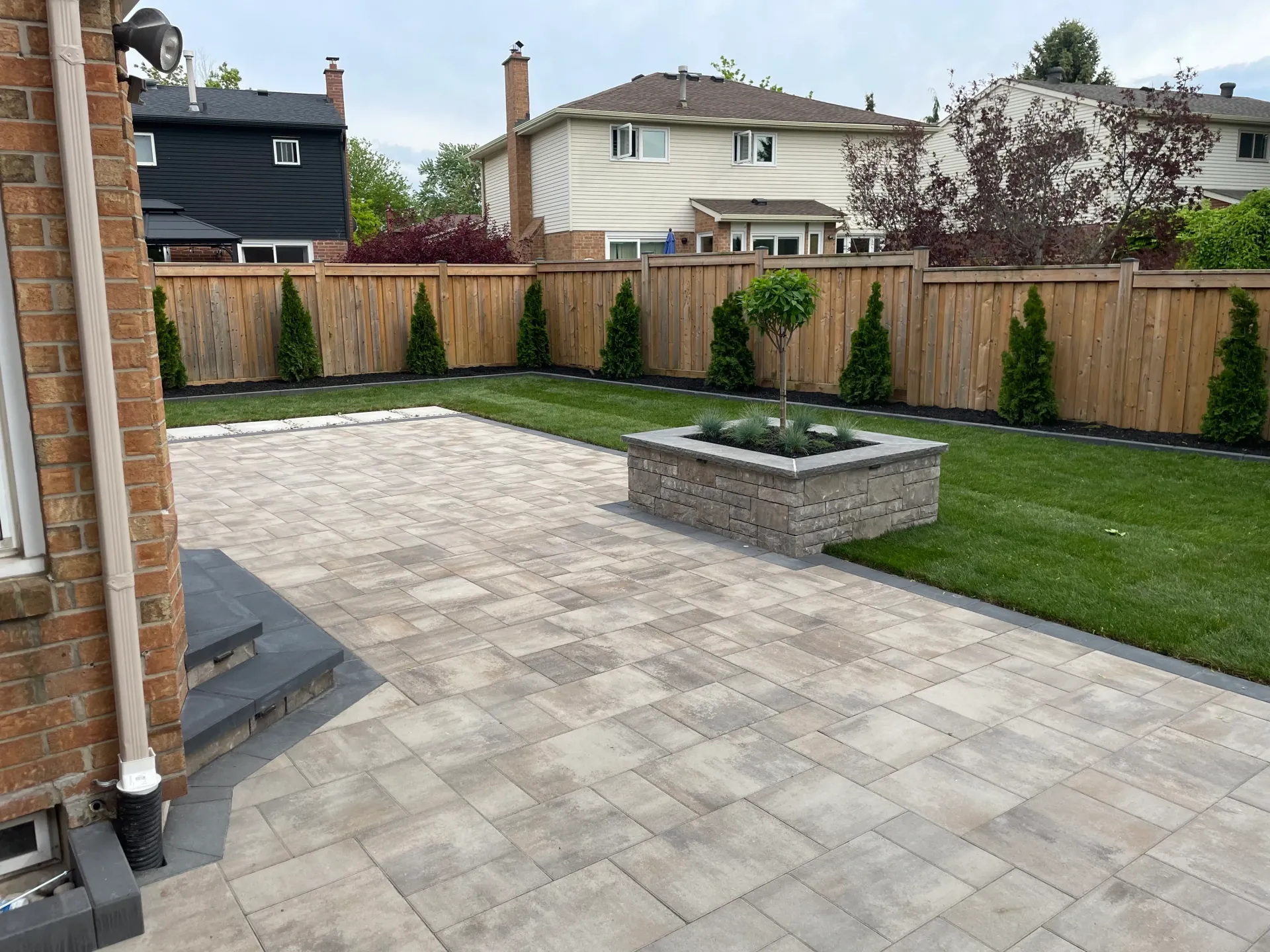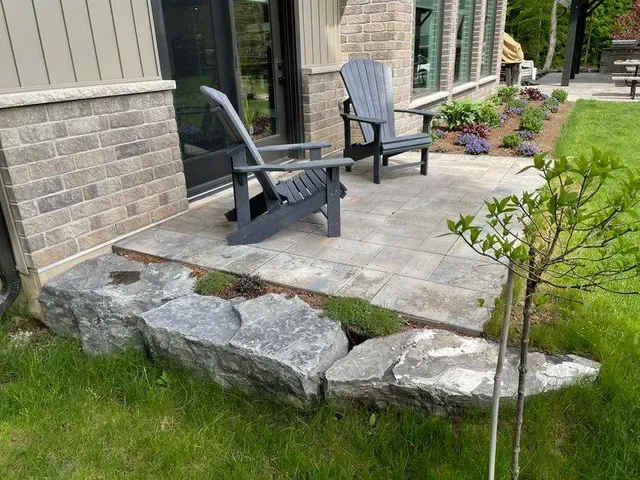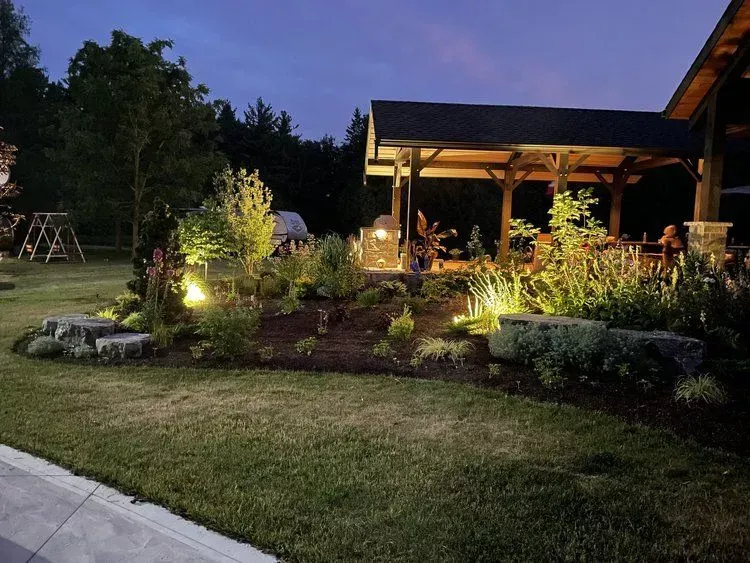What is Hardscaping?

What is Hardscaping?
Every landscape design tells a story, and at the heart of that narrative lies hardscaping—the art and science of incorporating nonliving, structural elements into outdoor spaces, including the careful integration of lawn area . While softscaping brings color, texture, and life through plants and flowers, hardscaping builds the stage on which those living features shine. Walkways, patios, retaining walls, and decorative stone borders define pathways, create gathering areas, and introduce both form and function to backyards, parks, and commercial properties alike. Far more than simple embellishments, these durable installations address practical concerns like erosion control and drainage management, while simultaneously elevating the visual appeal of any environment.
Understanding Hardscaping
Hardscaping refers to all inanimate components of landscape architecture—materials like natural stone, concrete, brick, metal, and wood that establish structure and shape. A flagstone patio provides an inviting surface for outdoor dining; a crisp concrete walkway guides visitors from driveway to front door; interlocking block walls carve terraces into sloped yards. These features, by their very nature, maintain their form season after season, resisting foot traffic, frost heave, and heavy rainfall in ways that plantings alone cannot. Beyond aesthetics, hardscapes protect fragile turf from compaction and, when paired with appropriate lawn care, channel water away from foundations, creating welcoming transitions between indoor and outdoor living spaces. Hardscaping can be customized to meet the specific needs of any property, ensuring both functionality and aesthetic appeal.
A Brief History of Hardscaping
The roots of hardscaping stretch back centuries: ancient civilizations built paved courtyards, stone amphitheaters, and water channels to control irrigation. Moorish gardens in medieval Spain incorporated marble tiles and fountains into lush courtyards, blending architecture with horticulture. In Europe’s Baroque era, grand terraces and sculpted stone balustrades framed formal gardens. Today’s hardscaping, along with effective gardening and lawn care, draws upon these traditions, marrying time‑tested techniques with modern materials, advanced grading equipment, and sustainable design principles to craft outdoor environments that endure.
Common Hardscape Materials
A successful hardscape project hinges on selecting materials that complement your home’s style and withstand local climate conditions. Selecting materials that complement your home’s style and withstand local climate and soil conditions is crucial for a successful hardscape project. Natural stone such as slate, limestone, and flagstone offers unique textures and color variations but typically comes at a premium price. Concrete, whether poured in place or shaped into stamped or exposed aggregate finishes, provides versatility in pattern and color. Brick pavers evoke classic charm and interlock for stability, while permeable pavers allow rainwater to seep into the ground, reducing runoff. For a warmer aesthetic, weather‑resistant woods like cedar and tropical hardwoods become comfortable decking underfoot, though they require periodic staining. Metal elements, including corten steel planters and edging, introduce sleek, contemporary lines. Each material carries its own maintenance profile, lifespan, and installation requirements, so working with an experienced hardscaping professional ensures the ideal balance of beauty, budget, and longevity.
Benefits of Hardscaping
Integrating hardscapes into your outdoor design delivers a spectrum of advantages. From a lifestyle perspective, a well‑constructed patio or outdoor kitchen extends living space beyond interior walls, creating venues for entertaining, relaxation, and family gatherings. Hardscapes also enhance safety, smoothing uneven ground and delineating walking routes to minimize trip hazards. Functionally, retaining walls and decorative boulder features slow erosion, protect flower beds, and reclaim usable yard space on sloped lots. Environmental benefits include managing stormwater through permeable surfaces, reducing reliance on irrigation with xeriscape rock gardens, and minimizing chemical runoff. Crucially for homeowners, thoughtfully executed hardscaping increases curb appeal and market value, making it a wise investment that pays dividends at resale. These features, along with property maintenance services, provide benefits year round, from creating cozy outdoor spaces in the summer to managing stormwater in the winter.
Hardscaping vs. Landscaping
While the two disciplines work hand in hand, the distinction is clear: landscaping brings living greenery, while hardscaping delivers enduring structure. A garden’s vibrant blooms and lush foliage invite us to relax and connect with nature, yet without walkways, seating areas, or shade structures, plants alone cannot organize or sustain an outdoor living environment. Conversely, a perfectly paved courtyard can feel sterile without the softening presence of shrubs or flowering borders. Optimal outdoor design, tailored to your landscaping needs, integrates both elements—hardscapes to define spatial hierarchy and softscapes to infuse color, scent, and seasonal interest. Gardening plays a crucial role in landscaping, adding vibrant blooms and lush foliage that complement the structural elements of hardscaping.
Key Design Principles for Hardscaping
Successful hardscape design begins with understanding site conditions: soil type, slope, drainage patterns, and solar orientation all inform material choice and placement. Scale and proportion should harmonize with existing architecture; a sprawling multilevel patio may overwhelm a modest bungalow, while tiny stepping stones can appear lost beside a grand estate. Creating focal points—such as a fire pit encircled by seating walls or a water fountain set against a stone backdrop—anchors the eye and draws people into the space. Lines of movement, whether curved pathways or straight sightlines, guide visitors through outdoor rooms, while lighting accents illuminate textures and enhance safety after dusk.
Hardscaping Features and Applications
Hardscaping features and applications are essential components of outdoor space design, providing both functionality and aesthetic appeal. In the Hamilton area, materials like stone, concrete, and brick are frequently used to craft beautiful and durable outdoor spaces. These hardscaping materials not only enhance the overall look and feel of a property but also significantly boost its curb appeal and value. Whether it’s a sleek concrete patio, a charming brick walkway, or a sturdy stone retaining wall, hardscaping helps to create inviting and practical environments that stand the test of time.
Outdoor Space Creation
Creating an outdoor space that is both functional and visually appealing is a cornerstone of hardscaping. This process involves designing and constructing areas for relaxation, entertainment, and recreation. Patios, decks, walkways, and driveways are just a few examples of features that can transform a yard into a backyard oasis. Additionally, the installation of retaining walls, water features, and outdoor kitchens can further enhance the space, making it perfect for enjoying the warmer months and creating lasting memories with family and friends. Through thoughtful construction and design, hardscaping turns ordinary yards into extraordinary outdoor spaces.
Outdoor Kitchen Design
Outdoor kitchen design has become a popular hardscaping application, allowing homeowners to extend their living and dining areas into the backyard. These kitchens often include countertops, sinks, grills, and other appliances, all integrated into a cohesive design with walls, floors, and even ceilings. A well-designed outdoor kitchen serves as a focal point of the property, ideal for entertaining guests and enjoying quality time with loved ones. By combining functionality with style, outdoor kitchens elevate the overall outdoor living experience, making them a sought-after feature in modern hardscaping projects.
Commercial Landscaping
Commercial landscaping is a specialized branch of hardscaping that focuses on designing and building outdoor spaces for commercial properties such as office buildings, restaurants, and shopping centers. This can involve the installation of sidewalks, driveways, and parking lots, as well as the construction of retaining walls, water features, and outdoor seating areas. A well-designed commercial landscape not only enhances the visual appeal of a property but also increases its value and attractiveness to customers and clients. In the Hamilton area, commercial landscaping services are in high demand as businesses strive to create outdoor spaces that reflect their brand and values. By incorporating hardscaping elements, commercial properties can achieve a professional and inviting atmosphere that stands out in the competitive market.
Planning Your Hardscape Project
Detailed planning is essential to prevent costly changes during installation. Begin by sketching your property’s footprint and noting fixed elements like trees, utilities, and grades. Clarify intended uses—will you host large gatherings, cook outdoors, or create tranquil reading nooks? Consult local regulations regarding permits, setback requirements, and stormwater management. Establish a realistic budget that accounts for excavation, base materials, paver or stone costs, labor, and optional amenities such as built‑in seating or lighting. Partnering with a reputable contractor not only ensures proper base preparation—critical for preventing frost heave and settling—but also provides access to grading equipment and specialized crews. Clear communication with your contractor is essential to ensure that your vision is accurately translated into the final design.
Installation Process: What to Expect
After clearance and excavation, installers grade the site and add layers of compacted gravel or sand to create a stable base. Precision is key: each layer must achieve correct slope for water runoff, typically one inch per foot. Paver stones or slabs are then laid in preplanned patterns, with tight joints filled by fine sand or polymeric material. For poured concrete projects, formwork directs the flow of the material, which can be textured or stamped before curing. Retaining walls require mechanical anchors and drainage pipes to withstand lateral soil pressure. Finally, property maintenance, including edging installed around the perimeter, locks pavers in place and prevents shifting over time. A well-executed job ensures that each layer is properly compacted and sloped for optimal water runoff. Your contractor will conduct a final walkthrough, demonstrating maintenance steps and ensuring satisfaction with the finished work.
Maintenance and Care
Although hardscapes demand less upkeep than plantings, regular care ensures their longevity and aesthetic appeal. Sweep or power‑wash surfaces to maintain cleanliness, remove debris, prevent moss growth in shaded areas, and preserve joint integrity. Inspect retaining walls and pathways annually for signs of settling or joint erosion; address minor settling by adding sand to paver gaps or resetting displaced stones. Wooden decks benefit from annual staining or sealing to guard against moisture and UV damage, while concrete may require sealant every few years to protect against staining and freeze‑thaw cycles. Integrate cleaning routines into seasonal home maintenance to prolong the life of your investment. In addition to hardscape maintenance, regular garden maintenance is essential to keep your outdoor space looking its best.
Environmental and Sustainability Considerations
With growing emphasis on green building practices, modern hardscaping embraces sustainability. Permeable paver systems allow rainwater to filter through joints into the subsoil, replenishing aquifers and reducing runoff. Reclaimed materials—salvaged stone, recycled concrete aggregate, and upcycled brick—offer character while diverting waste from landfills. Native stone local to your region minimizes transportation emissions and supports regional economies. Strategic placement of hardscapes can also create microclimates: stone walls absorb heat during the day and release it at night, extending growing seasons for adjacent plants. By combining material choice with thoughtful site planning, along with effective snow removal strategies hardscaping can contribute to a more resilient and eco‑friendly landscape. Strategic hardscaping can also contribute to overall property maintenance by reducing runoff and creating microclimates.
Cost Considerations and Return on Investment
Hardscaping costs vary widely based on material selection, project complexity, and regional labor rates. Natural stone patios can range from moderate to premium price points, whereas poured concrete remains among the most budget‑friendly options. Retaining walls—especially those requiring structural engineering—tend to sit at the higher end of the cost spectrum. While precise estimates require detailed proposals, homeowners often recoup a substantial portion of their investment through increased property value and enhanced curb appeal. According to industry data, quality hardscape installations can yield up to 60–80% return on investment at resale, making them a financially sound home improvement choice. Despite the potential costs, many hardscaping services offer competitive pricing that makes these projects accessible to a wide range of homeowners.
Get Started with Wilson Hardscape
Transform your outdoor environment into a stunning, functional living space by partnering with experienced installers. At Wilson Hardscape, we specialize in crafting custom patios, walkways, retaining walls, and outdoor living features that stand the test of time. Whether you envision a serene courtyard, a dynamic entertainment area, or an eco‑friendly permeable driveway, our team delivers expert design, quality materials, and professional installation. Contact Wilson Hardscape today to schedule a consultation and discover how thoughtful hardscaping, combined with our best customer service, can redefine your property’s beauty, utility, and value. At Wilson Hardscape, we pride ourselves on delivering excellent service that exceeds our clients' expectations. We look forward to bringing your outdoor vision to life!
FAQs
Is hardscaping suitable for all climates?
Yes. Material selection and installation techniques adapt to diverse climates. In cold regions, frost‑resistant pavers and proper drainage prevent freeze‑thaw damage, while in arid zones, heat‑resistant stone reduces thermal expansion cracks.
How long does a typical hardscaping project take?
Smaller projects, such as a modest patio or walkway, can complete in one to two weeks, while larger installations—multilevel decks, extensive retaining walls, or outdoor kitchens—often span four to six weeks, depending on weather and site conditions.
Can I add lighting and irrigation to my hardscape?
Absolutely. Low‑voltage LED fixtures, integrated into steps, walls, and planters, highlight textures and improve safety. Drip irrigation systems can run alongside paver joints to nurture surrounding plant beds without overspray.
What permits are required for hardscaping?
Permit requirements vary by municipality. Minor walkways and patios may not require permits, but retaining walls above a certain height, large concrete pours, and structures with electrical or plumbing typically do. Your contractor should secure all necessary approvals.
How do I choose the right contractor?
Look for licensed, insured professionals with extensive portfolios and positive client testimonials. A strong contractor provides site evaluations, detailed proposals with material specifications, realistic timelines, and clear maintenance guidelines. Ensure that your contractor provides a detailed quote with no hidden fees to avoid unexpected costs.




